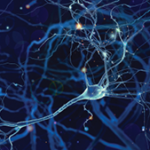Additionally, the investigators found that persistence of synovitis and persistence of effusion were associated with a decrease in the pressure pain threshold over time, primarily at the wrist, which suggests a spreading sensitization over time. Even when there was resolution of the inflammatory features on MRI, there was no significant change in the pressure pain threshold, which suggests that once sensitization or heightened sensitivity has occurred, removal of the inflammatory stimulus may not be able to alter the sensitization, they reported. There was also no change in temporal summation.
The presence and burden of bone marrow lesions, however, were not associated with sensitization, they reported.
Whether these research findings about pain sensitization can be extrapolated to other joints is not yet understood, Dr. Neogi says. Ongoing studies are exploring pain sensitization in hand OA and in RA where inflammatory synovitis is a prominent feature. Results may be forthcoming in the next couple of years, she says, adding that it is a “very active area of research.”
“We know that the character of pain in OA changes over time and that some of that is due to sensitization. Perhaps we can lessen that transition or lessen that persistence by targeting sensitization,” she says. “We know that sensitization is not the only mechanism by which people are experiencing increased pain severity, but if we can get at different aspects of pain and pain severity, we can help patients overall.”
Dr. Neogi is researching the role of pain sensitization in the experience of the 20–30% of people who have persistent pain even after knee replacement surgery. For some people, there seems to be a risk that their pain is permanent and no longer reversible. “We wonder if it is possible that some people have pain persistence after joint replacement because some of these changes persist, that they are still sensitized, and that that is what contributes to their ongoing pain.” Her research is exploring how the peripheral nociceptors are responding to the stimuli and how the spinal cord is passing on the signals to the brain.
“[The explanation] will be multifactorial, but the better we understand it, the better we will be able to individualize treatment so that we don’t try to do a one-size-fits-all for patients. We need to understand the underlying mechanisms of a patient’s pain and then specifically target those mechanisms,” Dr. Neogi says.
Until more is known about the mechanisms contributing to sensitization, “there are some general things that we can do to help our patients and start to get at a multimodal approach to pain management,” she says. These include addressing sleep and mood issues, weight loss, physical therapy and activity, the underutilized holistic approaches that can help patients manage their pain, and “we can also consider a referral to cognitive behavioral therapy to help patients better cope with their pain,” she says.


